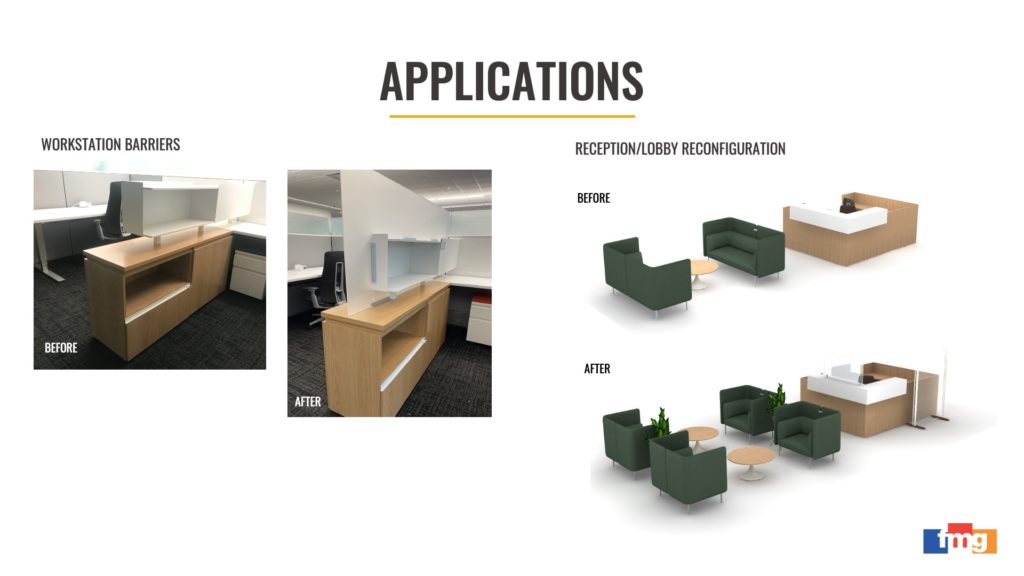
Furniture Marketing Group, Inc. (FMG) is a family of companies that provides workplace design and installation solutions for its clients. Below, CEO Greg Almond discusses how the COVID-19 pandemic has impacted his business and its implications for workplaces moving forward.
This Q&A is part of an ongoing series of DRC interviews with representatives from our member organizations about how they are facing the COVID-19 pandemic.
Q: How has the COVID-19 pandemic impacted FMG’s operations?
A: Initially, we went through a period where both our staff and our clients were in a state of shock. We quickly discovered, however, that our clients urgently needed help adapting as they considered how to safely bring employees back into the office. We pivoted on a dime to address this need and began working with our clients to assess their workplaces and identify what changes needed to be made to ensure a safe business environment.
Overnight, we went from having little going on to being busier than ever. I expect it will continue this way, as every company will need some modifications to its workspace over the next 18 months to address safety concerns.
We are glad our clients are addressing these issues prior to bringing employees back on site, and hope they will continue this methodical, phased-in approach. If we rush, it will only make needed workplace modifications more difficult to complete.
A: We are looking broadly at workplace layouts to reduce pinch points or potential areas of employee congestion. Instead of open floorplans, our clients need physical separation between employees. But they don’t want this separation to be visible; they still want the office to feel open and be aesthetically pleasing. By utilizing high-quality, modern materials, we can address these competing needs, providing necessary safety measures without compromising appearance.
For instance, acrylic panels can be inserted in between previously unseparated desks to offer a layer of protection for the employees who use those workstations. These panels are easily installed and removed without damaging existing surfaces, and look as though they were designed to be there all along.

Another pressing need is reception areas. We know that our clients will need to screen both visitors and employees for fevers and other risk-factors prior to them entering the office. We are engineering solutions for our clients so that visitors can take their temperature and answer some basic screening questions behind a physical barrier without exposing the receptionist.
Q: How has FMG been able to adjust to this new demand, and what trusted sources of information are you relying on to guide your recommendations for clients?
A: We are learning in this new world as our clients are. We consider the information at hand as well our knowledge gained through 40 years of business. We are fortunate to work with companies both large and small; local and global. Each business may have different needs but leans on us to be the experts. We have to leverage what we know today, understand the design implications in a new world, and apply a sound strategy. In a lot of ways, we are seeing a reversion to old workplace layouts with more privacy and spatial allotment. We can actually reference our database of historical projects and floorplans to guide our recommendations for clients.
We have continued to monitor and follow the CDC’s recommendations, through which we have developed a better understanding of exposure. Exposure, in this context, is measured by amount of time spent. Since this virus can be present without any symptoms, limiting exposure throughout the workday is crucially important to conduct safe business. We are working with all our clients to ensure employee health and wellness is considered through design.